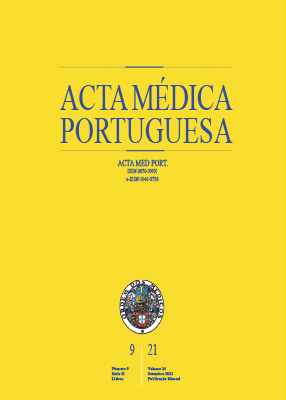Necrotizing Fasciitis Caused by Photobacterium damselae: The First Case in Portugal
DOI:
https://doi.org/10.20344/amp.13032Keywords:
Bacterial Infections, Fasciitis, Necrotizing, Hand Injuries, Photobacterium, Vibrio InfectionsAbstract
Necrotizing fasciitis is a severe soft tissue infection with a high mortality rate and therefore requires emergent surgical treatment. Several microorganisms can cause this infection, Photobacterium damselae being one of them, with only eight cases previously published in the literature. We report the first ever case of necrotizing fasciitis, caused by this microorganism, in Portugal. In this case report the patient survived after several debridement procedures and reconstruction of the upper limb with acellular dermal matrix and skin graft. A brief review of the Photobacterium damselae soft tissue infection reports as well as the clinical presentation, diagnosis, pathophysiology and treatment of necrotizing fasciitis can also be found in this paper.
Downloads
Downloads
Published
How to Cite
Issue
Section
License
All the articles published in the AMP are open access and comply with the requirements of funding agencies or academic institutions. The AMP is governed by the terms of the Creative Commons ‘Attribution – Non-Commercial Use - (CC-BY-NC)’ license, regarding the use by third parties.
It is the author’s responsibility to obtain approval for the reproduction of figures, tables, etc. from other publications.
Upon acceptance of an article for publication, the authors will be asked to complete the ICMJE “Copyright Liability and Copyright Sharing Statement “(http://www.actamedicaportuguesa.com/info/AMP-NormasPublicacao.pdf) and the “Declaration of Potential Conflicts of Interest” (http:// www.icmje.org/conflicts-of-interest). An e-mail will be sent to the corresponding author to acknowledge receipt of the manuscript.
After publication, the authors are authorised to make their articles available in repositories of their institutions of origin, as long as they always mention where they were published and according to the Creative Commons license.









